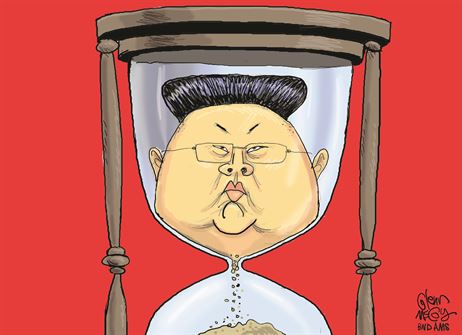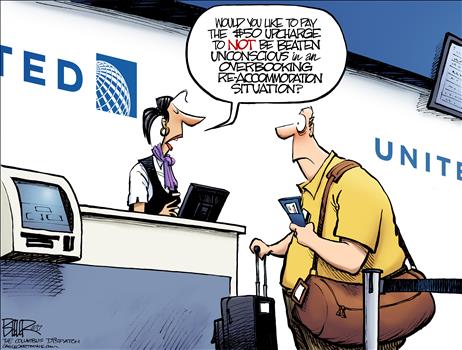Political Art: Food for Thought

Image Via Townhall here.

Image Via Townhall here.

Image obtained from streetartsf.com here.
In this post we will introduce a website that can be used to view the reciprocity between art and politics. Mtholyoke.edu follows the progression of art and highlights the way that humans have used art over time.
On the home landing page the creator of the website states what political art is– concepts that we have touched on and visited throughout this website.
“Art and Images have been used by all sorts of people throughout the ages as tools not only for personal expression but also for national unification.”
The author also spoke on art as an expression of beliefs and a means of seeing the world.
“Art has been used as a vessel to express beliefs in a semi-anonymous and extremely powerful way. An image holds a great deal more direct power than many other forms of expression,” the author stated. “Art has been used as a way to enlist others to see the world through the creator’s eyes, whether that be to form a unified front or to oppose the majority.”
The concept of propaganda is also mentioned with the concept of personal opinion being highlighted.
“Propaganda is a tool where art is dominant. Its purpose is to enlist the support of the whole of a society. Expressing personal opinions seem to be the other prominent use for art as a political tool.”
And to end the home intro, the author touches on a topic that has been evident and noted throughout this entire blog.
“There is a major problem that abounds from studying ‘political art’, that problem is that if you look into it, all art can be thought of as political.”
To explore the website, an action I highly suggest, view the link here.
In today’s blog post we will look at political art through a communication lens. Maggie Rians, communication junior who has spent three years studying the communicative ways of humans, gave her insight on political art.
Rians said that to her political art definitely has an importance.
“Definitely! Political Art engages and influences society to think a certain way about an art piece. It can be used a prove a point, make a stand, or sometimes it can cause a riot.”
Rians also elaborated on how art utilizes communication, improves communication, and at some points hinders communication.


Image obtained via nonymousartofrevolution.com.
In the next couple of blogs we will look at a collection of art pieces from an article by Hannah Deitch, Stefanie De Leon Tzic, Brian Marks and Ethan Varian.
The first image looked at is a work by Robbie Conal shown below.

Image obtained here.
Conal spoke about the above poster in his quote below.
“We’re not talking about sanctioned public art,” says veteran L.A. art agitator Robbie Conal. His posters depicting Donald Trump framed by the words “Bully Culprit” have been pasted all over the city. “In my case, it’s a minor form of civil disobedience.”
Conal is a unique artist in that he does not just focus on one political party but rather highlights the error on both sides.
As the LATimes notes, “Conal gained popularity in the 1980’s for his anti-Reagan “Contra Diction” posters and other responses to the Iran-Contra affair. But while Republican lawmakers have been the subjects of some of his most striking images, he’s targeted Democrats as well. One of his most memorable posters was an image of Bill Clinton juxtaposed with the words “Dough Nation.”
More on Conal and his artwork can be found at this article here.

Image obtained via Townhall: here.

Image obtained via here.
In today’s blog post we will continue to look at political art through a communication lens. Sarah Austin, communication junior and aspiring lawyer, talked about the implications that come with political art.
Austin said that she believes that political art has an importance in the world that we inhabit.
“It enhances the way we communicate our political beliefs and perspectives through different mediums,” Austin said.
When asked how political art utilizes communication Austin responded that political art has boundaries as to when it should be utilized.
“Controversial topics should be strayed from in political art however it might offer new ways to present opinions that others find offensive, or offend people further.”
Austin said that her favorite political art piece is a piece by Shepard Fairey, an artist we talked about earlier on in this blog. The art piece, shown below, is Austin’s favorite because of the distinct color scheme and political influence Fairey puts in his work.

This image was obtained via Pinterest at this link.
When asked if there were any communication theories that she has studied or learned about that relate specifically to political art Austin said that she did have a specific theory in mind.
“Social Learning Theory comes to mind,” Austin said. “I see political opinions expressed through art and pop culture influencing the way I believe and behave pertaining to politics and political views.”
Austin also said that the reciprocity between politics and art is very apparent in the cultural surroundings she has grown up in.
“I grew up in a very culturally diverse city in San Antonio,” Austin said. “And even here in College Station anything can be seen as art- posters all around campus, protests that happen at the university, even lectures can be seen as political. The art that you do see has to be political in some sense because it mimics the world around it.”

Jerry Saltz, in his highly opinionated article “When Did the Art World Get So Conservative?” gives an interesting take on his opinions on the modernity of art.
An example of his opinion on art can be found in his last paragraph when he says, “One of art’s great weapons is its bad taste — how something can seem ugly, wrong, or off but still help extend art. Art is for anyone; it just isn’t for everyone. And we have to stop acting as if it is something to be domesticated, proper, good. Oscar Wilde thought that art is amoral, something first for itself; sometimes, it’s something you cross the street to avoid. Sometimes art is Muddy Waters’ “Mannish Boy” blatantly howling a barbaric yelp. Come what may. Operating within rules isn’t art. It’s about acceptance. Being good. Moreover, if we’re this bunkered in, what are we retreating from? What are we so afraid of? And why?”
More of his opinion can be found on his Vulture article here.

Following the scandal with United Airlines, a political cartoonist at Townhall made the above cartoon (Source can be found here).